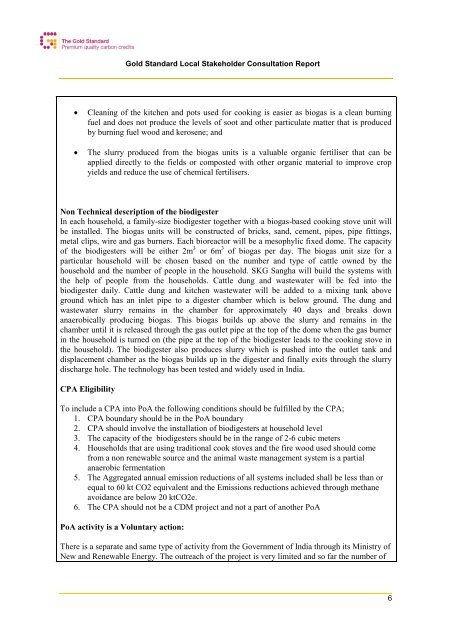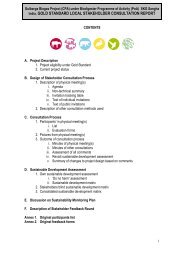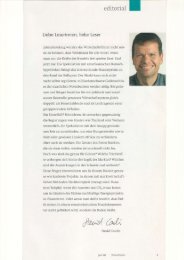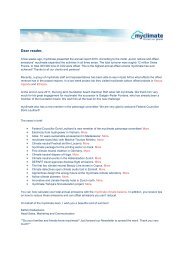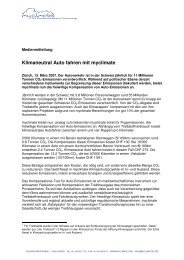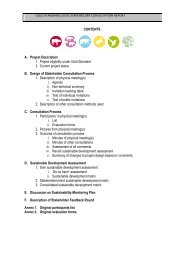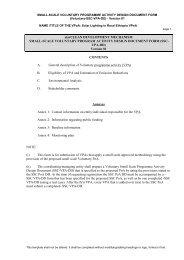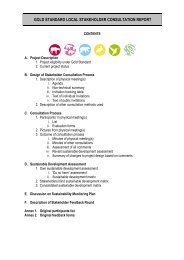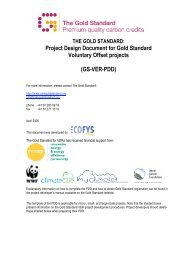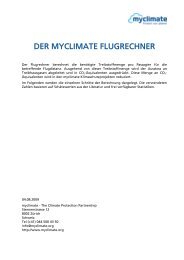Clean development mechanism project design ... - myclimate
Clean development mechanism project design ... - myclimate
Clean development mechanism project design ... - myclimate
Create successful ePaper yourself
Turn your PDF publications into a flip-book with our unique Google optimized e-Paper software.
Gold Standard Local Stakeholder Consultation Report<br />
<strong>Clean</strong>ing of the kitchen and pots used for cooking is easier as biogas is a clean burning<br />
fuel and does not produce the levels of soot and other particulate matter that is produced<br />
by burning fuel wood and kerosene; and<br />
The slurry produced from the biogas units is a valuable organic fertiliser that can be<br />
applied directly to the fields or composted with other organic material to improve crop<br />
yields and reduce the use of chemical fertilisers.<br />
Non Technical description of the biodigester<br />
In each household, a family-size biodigester together with a biogas-based cooking stove unit will<br />
be installed. The biogas units will be constructed of bricks, sand, cement, pipes, pipe fittings,<br />
metal clips, wire and gas burners. Each bioreactor will be a mesophylic fixed dome. The capacity<br />
of the biodigesters will be either 2m 3 or 6m 3 of biogas per day. The biogas unit size for a<br />
particular household will be chosen based on the number and type of cattle owned by the<br />
household and the number of people in the household. SKG Sangha will build the systems with<br />
the help of people from the households. Cattle dung and wastewater will be fed into the<br />
biodigester daily. Cattle dung and kitchen wastewater will be added to a mixing tank above<br />
ground which has an inlet pipe to a digester chamber which is below ground. The dung and<br />
wastewater slurry remains in the chamber for approximately 40 days and breaks down<br />
anaerobically producing biogas. This biogas builds up above the slurry and remains in the<br />
chamber until it is released through the gas outlet pipe at the top of the dome when the gas burner<br />
in the household is turned on (the pipe at the top of the biodigester leads to the cooking stove in<br />
the household). The biodigester also produces slurry which is pushed into the outlet tank and<br />
displacement chamber as the biogas builds up in the digester and finally exits through the slurry<br />
discharge hole. The technology has been tested and widely used in India.<br />
CPA Eligibility<br />
To include a CPA into PoA the following conditions should be fulfilled by the CPA;<br />
1. CPA boundary should be in the PoA boundary<br />
2. CPA should involve the installation of biodigesters at household level<br />
3. The capacity of the biodigesters should be in the range of 2-6 cubic meters<br />
4. Households that are using traditional cook stoves and the fire wood used should come<br />
from a non renewable source and the animal waste management system is a partial<br />
anaerobic fermentation<br />
5. The Aggregated annual emission reductions of all systems included shall be less than or<br />
equal to 60 kt CO2 equivalent and the Emissions reductions achieved through methane<br />
avoidance are below 20 ktCO2e.<br />
6. The CPA should not be a CDM <strong>project</strong> and not a part of another PoA<br />
PoA activity is a Voluntary action:<br />
There is a separate and same type of activity from the Government of India through its Ministry of<br />
New and Renewable Energy. The outreach of the <strong>project</strong> is very limited and so far the number of<br />
6


